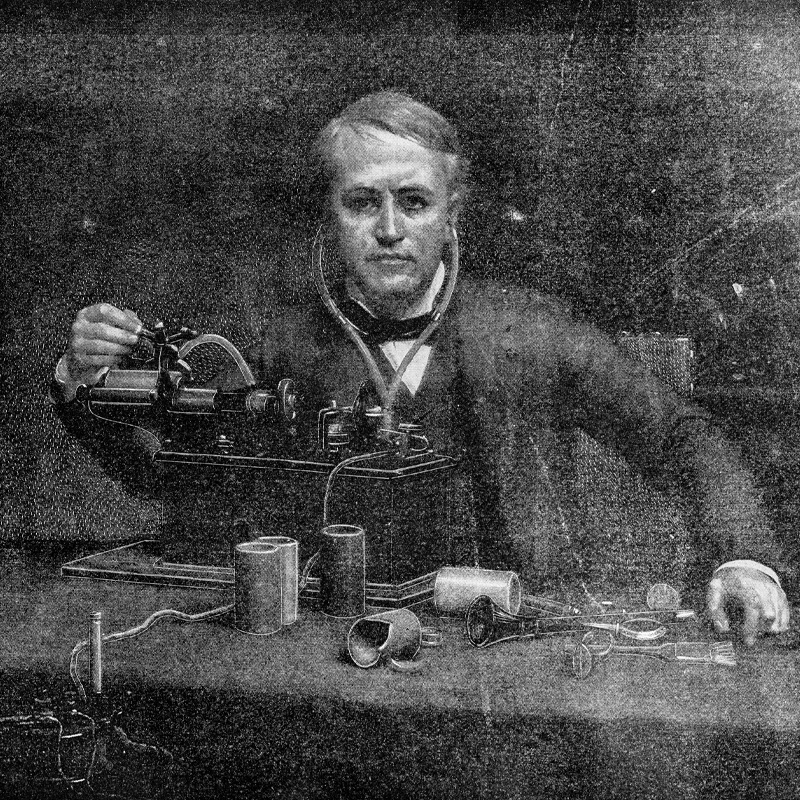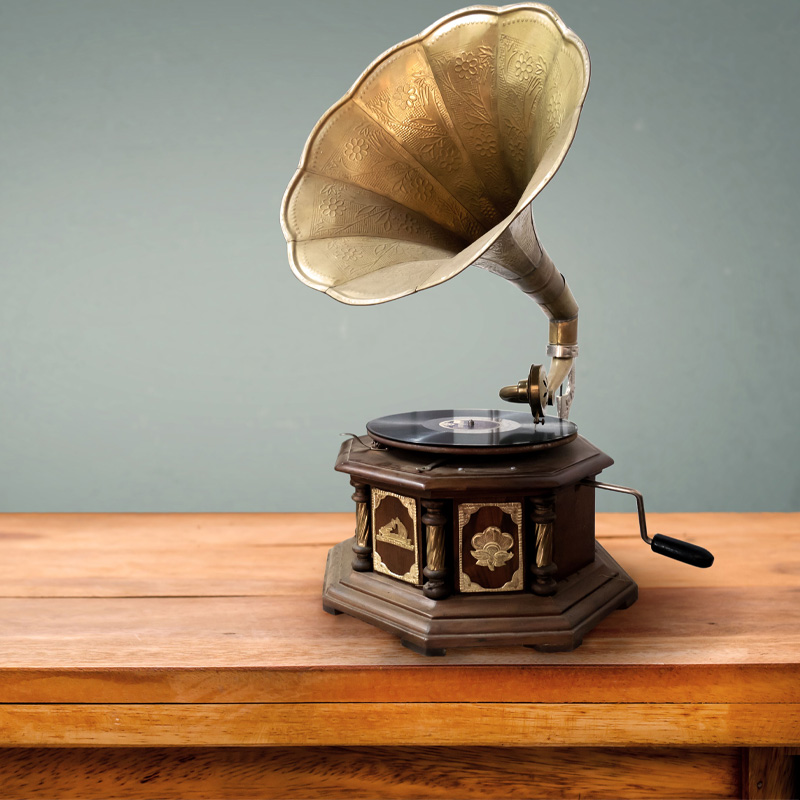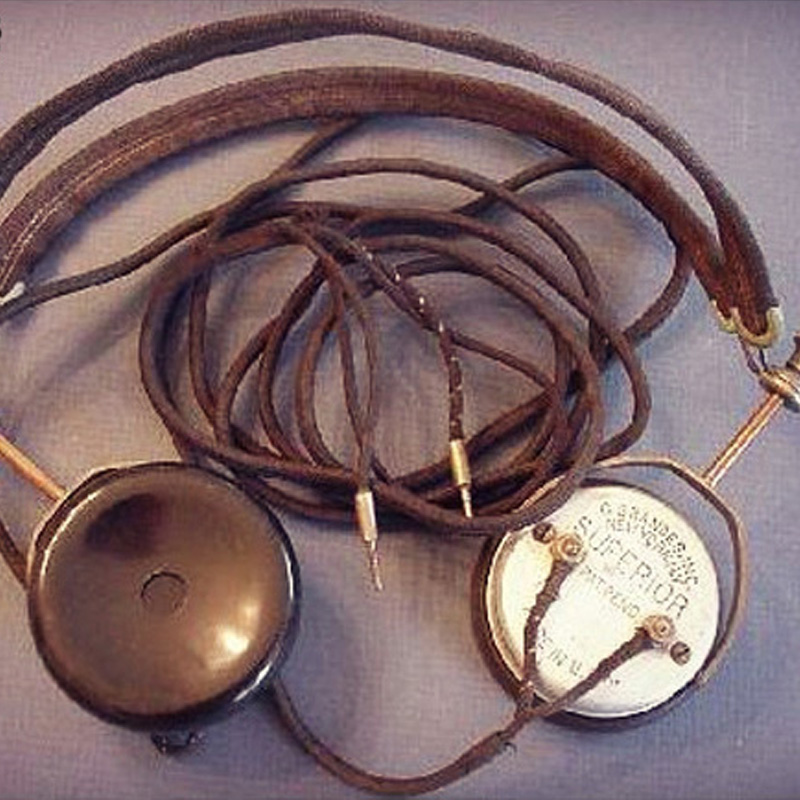Looking back now on how music technology has evolved, did you ever imagine that you would one day be listening to music on your phone? Here’s a timeline of how music devices have changed over the past 200 years.
Looking back now on how music technology has evolved, did you ever imagine that you would one day be listening to music on your phone? Here’s a timeline of how music devices have changed over the past 200 years.

1811: Music Box
The Music Box was automatic and worked by placing pins on a disc or a revolving cylinder, and the most exciting part was that it could fit into clothing pockets. The first Music Box factory opened in 1815, creating a boom in the industry.
1857: Phonautograph/1877: Phonograph
These inventions can be attributed to both Edouard-Leon Scott de Martinville and Thomas Edison. Although de Martinville captured the first sound recording with his phonautograph in 1857, he didn’t think anyone would hear the recordings – he thought they would just read the tracings instead. Edison created the phonograph twenty years later, which recorded sound and then played it back. The first song it played was “Mary Had a Little Lamb.”
1887: Gramophone
Created by Emile Berliner, the gramophone was different than a phonograph because it used a flat spinning disc instead of a cylinder. The Victrola Gramophone hit the market in 1896, becoming the first commercially available record player.

1890: Nickel-in-the-slot Phonograph
This early form of a jukebox was patented as the “Coin Actuated Attachment for Phonograph” and allowed anyone to listen to music through four listening tubes.
1905-1925: 78 RPM Standard
The ’78 was invented in 1905 but didn’t become industry standard until 1925. It was named as such because it could play a speed of around 78 revolutions per minute. It went along with the Victrolas, ensuring the records would play correctly.
1910: Headphones
Developed by Nathaniel Baldwin, the original headphones were uncomfortable to wear because they didn’t have any padding.

1920: First Radio Station
The first commercially licensed radio station, KDKA, is still broadcast out of East Pittsburgh, Pennsylvania. However, it struggled with studio acoustics when it first went live.
1925: Electric Record Player
The Electric Record Player was more developed than the phonograph, and its disc system became popular due to its cheap price.
1928: Magnetic Tape
German Austrian inventor and engineer Fritz Pfleumer added iron oxide powder onto paper with lacquer, creating the first magnetic tape, but it was not available in the United States until later.

1935: AEG Magnetophon Tape Recorder
German electronics-engineering company AEG created the first reel-to-reel tape recorder to go along with the magnetic tape, which was invented seven years before.
1937: Two-Channel Stereo
Bell Labs invented a two-channel stereo to use for film soundtracks. Disney used the technology in 1940 for the movie Fantasia, which was the first commercial studio film with high-fidelity stereo sound.
1940: Vocoder
This 1940 synthesizer preceded Auto-Tune. Created by a physicist at Bell Labs, it could manipulate voice pitch, which was vital during World War 2 to obscure conversations between President Roosevelt and Winston Churchill.

1948: Long-Playing Record (LP)
Introduced by Columbia Records, the Long-Playing Record, also called an album, revolutionized the music industry and the way music was heard. Even today, many people collect and continue to use them.
1954: Transistor Radio
The transistor radio allowed people to take their music on the go. The first model, called the Regency-TR-1, was a handheld, portable music device that worked with AM broadcasts.

1962: First Portable Stereo
Developed by Henry Kloss, the KLH Model 11 Portable Stereo allowed for more flexibility when listening to music.
1963: Audio cassette
Philips consolidated reel-to-reel into the first compact cassette tape, which enabled the creation of mixtapes and made music more fluid.
1965: 8-Track Tape
This invention brought music into cars before cassette tapes were integrated into car stereos. Ford offered to install them in their 1966 model.
1966: Boombox
With the Boombox, radio broadcasts could be recorded on cassette tapes without cables or microphones. They were also handy because they were portable.

1972: Technic SL-1200 Turntables
This device was released as a high-fidelity record player for consumers and was ideal for pushbutton cueing for radios and dance clubs.
1979: Walkman
Sony created the Walkman, most likely named because you could walk with it, making music even more portable than before. It was the perfect link between Phillips’ cassette tapes and Nathaniel Baldwin’s headphones.
1982: Compact Disc (CD)
The Compact Disc caused an entire revolution in music, converting digital data to analog sound, and was available everywhere by 1984. It became the biggest threat to LPs and cassettes.
1984: Discman
The portable CD player was introduced by Sony and was an easy way to play CDs while you traveled.

1998: MP3 Player
With the MP3 Player, file compression became more advanced and there was no longer a need to carry a tape or CD with you because it played audio files.
2001: iPod by Apple, Inc.
A total gamechanger, the iPod provided 5GB or 10GB of songs, albums, and playlists, and music could be scrolled through with a mechanical scroll wheel. Digital music became more popular than ever.

2007: iPod Touch by Apple, Inc.
This was the beginning of the smart device era – not only did the iPod Touch play music, but it also featured games and other apps, paving the way for the mass production of smartphones, which is how most of us listen to music now.
Sources:
https://www.blackpoolgrand.co.uk/music-devices-through-time
https://www.softschools.com/timelines/evolution_of_music_players_timeline/406/